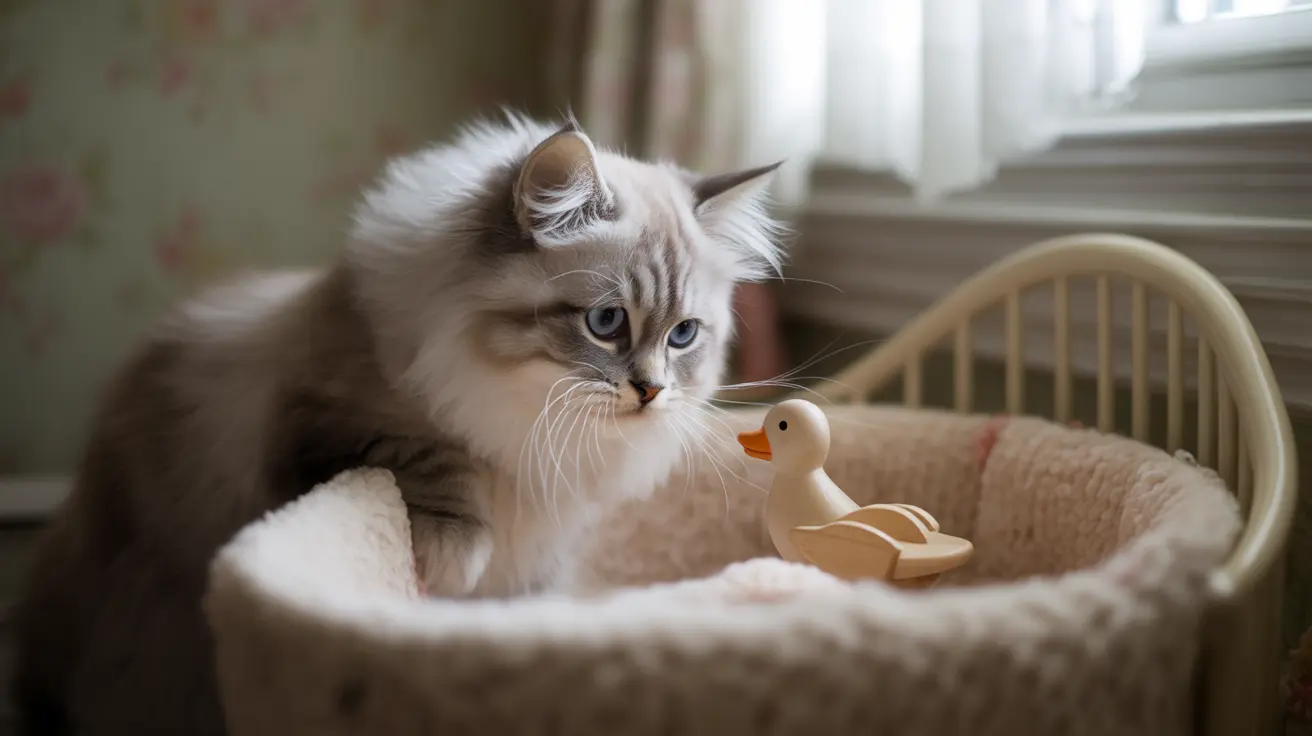Understanding Why Cats Are Attracted to Cribs
Cats naturally gravitate towards cribs for several compelling reasons. The elevated position provides them with a perfect vantage point, while the soft bedding creates an inviting space for rest. Additionally, the new smells and textures associated with baby items spark their natural curiosity, making the crib an irresistible attraction for many felines.
Safety Risks of Cats in Baby Cribs
While cats aren't intentionally harmful, their presence in a baby's crib poses several serious risks:
- Potential suffocation hazard if the cat lies too close to the baby
- Risk of allergic reactions from cat hair and dander
- Possible scratches or injuries from startled cats
- Hygiene concerns from fur, dander, and potential litter residue
Effective Physical Barriers
Install Protective Covers
A breathable mesh crib cover is one of the most reliable solutions for keeping cats away from your baby's sleeping area. These covers allow proper airflow while creating a physical barrier that prevents your cat from entering the crib.
Create Environmental Barriers
Position the crib away from furniture that could serve as launching points for your cat. Install a screen door on the nursery to maintain visibility while restricting access, and always keep the nursery door closed during nap times.
Training and Behavior Modification Strategies
Early Prevention
Set up the crib several weeks before your baby's arrival to begin training your cat. Consistently remove your cat from the crib area, using firm but gentle commands, and redirect them to appropriate resting spots.
Positive Reinforcement
Create attractive alternatives by placing comfortable cat beds or climbing trees in other areas of the home. Reward your cat with treats and praise when they use these designated spaces instead of attempting to access the crib.
Effective Deterrent Methods
Physical Deterrents
Place aluminum foil or double-sided tape in the crib temporarily - most cats dislike these textures and will quickly learn to avoid the area. Pet-safe training mats that emit a harmless static charge can also be effective deterrents.
Natural Solutions
Consider using cat-safe scent deterrents around the crib area, such as citrus or mint. Always ensure any deterrents used are safe for both your baby and cat.
Frequently Asked Questions
How can I safely keep my cat out of my baby's crib without harming them?
Use a combination of physical barriers like mesh covers, consistent training, and positive reinforcement. Never resort to harsh punishment or harmful deterrents.
What are the risks if a cat sleeps in or near a baby's crib?
The main risks include suffocation hazards, allergic reactions, potential scratches, and hygiene concerns from cat hair and dander.
Which physical barriers or deterrents work best to prevent cats from accessing cribs?
Mesh crib covers, aluminum foil, double-sided tape, and pet-safe training mats are among the most effective solutions.
How can I train my cat to stay away from the crib before the baby arrives?
Begin training several weeks before the baby arrives by consistently removing the cat from the crib area and providing alternative spaces. Use positive reinforcement when the cat chooses appropriate resting spots.
Are there safe products or home modifications recommended to keep cats out of nurseries?
Yes, recommended products include breathable mesh crib covers, screen doors for the nursery, pet-safe deterrent mats, and cat-specific furniture placed away from the crib area.
Creating a Harmonious Environment
Remember that successful cat management requires patience and consistency. Focus on creating a positive environment where both your baby and cat can coexist safely. With proper preparation and the right combination of deterrents and training, you can ensure your baby's crib remains a cat-free zone while maintaining your pet's emotional well-being.






